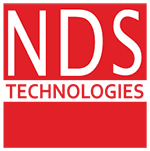SUSE Linux Enterprise is ranked 4th in Operating Systems (OS) for Business with 2 reviews while Open Source Linux is ranked 2nd in Operating Systems (OS) for Business with 10 reviews. SUSE Linux Enterprise is rated 8.0, while Open Source Linux is rated 8.2. The top reviewer of SUSE Linux Enterprise writes “Out-of-the-box SLES supported all of our HBAs and hardware specific components. I have not been overly impressed with their technical support”. On the other hand, the top reviewer of Open Source Linux writes “A stable, user-friendly solution that has good standardization, visualization, and package management”. SUSE Linux Enterprise is most compared with Red Hat Linux (RHEL), CentOS and openSUSE Leap, whereas Open Source Linux is most compared with Oracle Linux, Oracle Solaris and openSUSE Leap.

SUSE Linux Enterprise

Open Source Linux
Quotes From Members
We asked business professionals to review the solutions they use. Here are some excerpts of what they said:
Pros
Out-of-the-box SLES supported all of our HBAs and hardware specific components.
It also was very easy to setup, and offered an easy to use advanced setup option as well. This helped to create special configurations for different use cases.
YaST simplifies the server management of SUSE allowing for a centralized utility to control most of the server functions.
The initial setup for most modern Linux distributions is normally straightforward. Most of the common distributions use an ncurses or GUI install.
Open Source Linux has a good interface, it is easier to use than other distribution such as CentOS or Red Hat. It’s suitable for beginners who want to start learning Linux. It has a simple interface and it’s easy to use.
The initial setup is simple.
There are many features I like about this solution, but one that stands out, is that it allows me to easily install new packages and to have recent packages available.
I think Open Source Linux’s main strength, as opposed to using the other Linuxes, has been its ability to encourage user feedback.
The most valuable feature is the user interface.
The solution is stable.
I find the Linux community very valuable and the fact it is open source. So it’s free and I use it without any problems.
If there is a virus going into the network, it has to pass through an Open Source Linux server, which can’t be infected by the virus. So, there are less viruses on our systems.
Cons
When working in a Department of Defense environment, Security Technical Implementation Guides (STIGs) have to be followed. SLES is not really addressed directly here. It did make following security policy difficult.
I have not been overly impressed with their technical support.
All distributions of Linux could use some improvement.
The only stability issues that I can recall encountering with SUSE would be with KDE. However, that is limited to just the desktop environment as I have not had stability issues with most server functions.
Open Source Linux should create some specific features, like Red Hat. Red Hat has provided many features for open-source, like FreeIPA.
If I run an application, I need it to show up in Microsoft, so Microsoft can run in Open Source Linux. It needs to connect better with Microsoft products.
I am really very satisfied with this solution. However, one thing that I would like to see improve, is to have better support for multiple screens with multiple resolutions. For me, that is the most important feature.
On the gaming side, things are happening but there are some games that should be ported to Open Source Linux.
The solution could be better integrated with Microsoft.
They aren’t as user-friendly as Microsoft. The solution can use a better UI.
An easier to configure firewall would be a good add-on.
Developing more applications for businesses could work better, but that is not part of the OS piece. Let the developers work on other apps, therefore the needs for consuming less memory do not affect the performance of this OS version.
Pricing and Cost Advice
As far as licensing goes, there is nothing unusual here. The price and model have worked fine for my organization.
I would advise others to download the free or strictly open source versions, then test them in their environment before committing to a purchase. This will allow for testing suitability for applications that they want to run.
I use the free version, so I don’t have any license fees.
Old equipment works for at least two or three years more, which means a significant savings.
Ranking
out of 10 in Operating Systems (OS) for Business
out of 10 in Operating Systems (OS) for Business
Also Known As
Open Source Linux
Overview
The modern and modular OS helps simplify multimodal IT, makes traditional IT infrastructure efficient and provides an engaging platform for developers. As a result, you can easily deploy and transition business-critical workloads across on-premise and public cloud environments.
Super-fast, easy to use and free, the Open Source Linux operating system powers millions of desktops, netbooks and servers around the world.
Sample Customers
Air India, Akademicki Szpital Kliniczny (ASK), Allone, Altran, Apollo, ARCHIVA, Asia Innovatory Management School, ATLAS ELEKTRONIK GmbH, AutoData Norge AS, Baldor Electric, Business Connexion, CASIO, Ciclum Farma, Delta Lloyd, Edumate , HPE, SAP SE, Lenovo, BMW, T-Systems, UCX, Turners & Growers, Shenzhen Development Bank, Bosch Group, JK Tyres & Industries, IOCL, European Space Agency, Daimler AG, China Minsheng Banking Corp, Café Coffee Day, Unisys, Petrochina Company Ltd, Fitch Ratings, ABeam Consulting Co Ltd, Tyro Payments, Rackspace, Pacific Textiles, …
Samsung, eBay, AT&T, Walmart, Cisco, Time Warner Cable, Bloomberg, Best Buy, Dell, Intel, Microsoft, Ericsson, Orange, Wells Fargo
